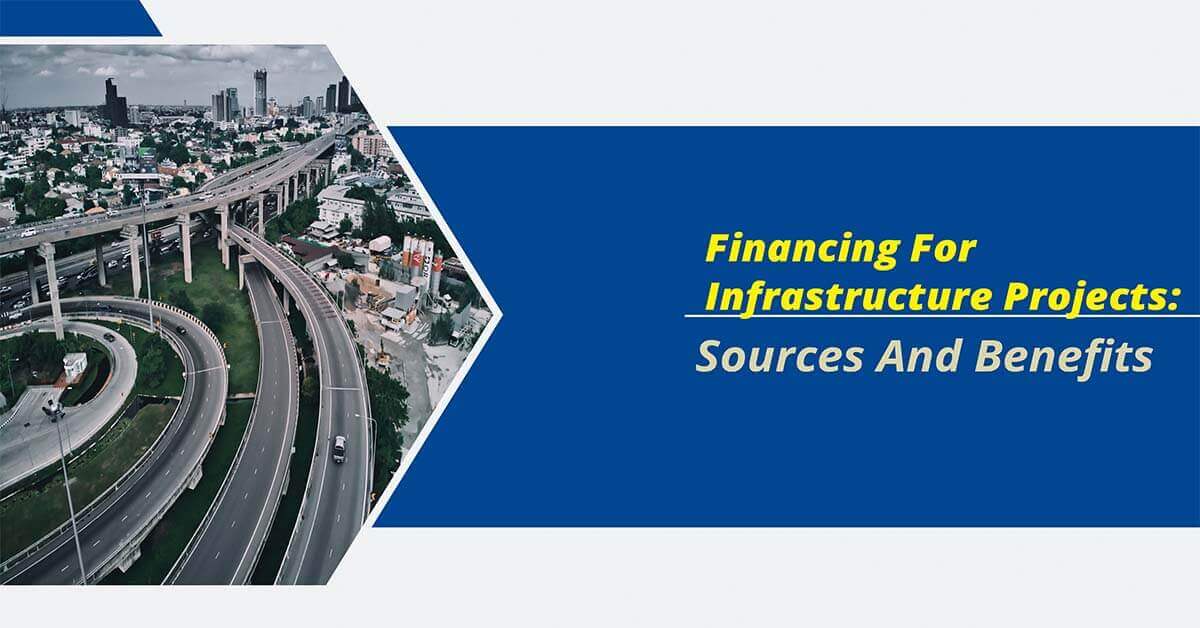Financing for Infrastructure Projects: Sources And Benefits
December 09, 2020
Admin
financing for infrastructure projects finances for infrastructure projects infrastructure project financing infrastructure project finances
Are you looking for ways to finance infrastructure projects? But don't know where to begin? A short period of time has passed since the financing for infrastructure projects was the public sector's responsibility only. But as the world progressed, there was a need for the private sector to take the initiative in investing money in projects for the infrastructure sector as well. This initiative has changed the game of the infrastructure sector, such as telecom, power, and transportation, especially in developing countries.
The issue arises because the public sector solely cannot finance these infrastructure projects as it does not have enough finances to meet the requirement. Private sector participation is necessary to develop world-class infrastructure like those of developed countries. Developing countries need more infrastructure projects in order to meet the demand of the increasing population.
Definition of infrastructure lending:
- Various institutions such as banks, financial Institutions, and NBFC, fall in the category of "infrastructure lending," or provide financing for infrastructure projects.
In simple words, the borrower company is engaged in the following tasks:
- Development
- Operation and Maintenance
Development, operation, and maintenance of the infrastructure projects come under the following sectors:
- Roads including tolls, bridges, or a railway system
- Highway projects and activities related to it are an integral aspect.
- Port, airport, inland port, or waterway
- Water supply, irrigation projects, sanitation, and sewage system
- Telecommunication system: Basic, cellular and Radio
- Generation, distribution and transmission of power

The names of eligible infrastructure projects are decided by the department of economic affairs, Ministry of Finance and a ‘Harmonized List’ of infrastructure projects is issued from time to time for necessary action by all the stakeholders.
Characteristics of infrastructure projects:
They are highly capital intensive. They have a long operating life, and huge sunk costs are involved in them. Traditional infrastructure projects were under the control of the only government. Most infrastructure projects are based on the public-private partnership (PPP) model. So careful evaluation of complexities is required before financing for infrastructure projects.
Types of financing by banks:
The financial requirements for infrastructure projects are fulfilled by the banks. Capital finance, term loan, project loan, shares are acquired as a part of the project finance package. The banks are involved in the following types of financing for infrastructure projects:
- Takeout financing - Banks enter into takeout financing arrangements with the help of institutions like IIFCL.
- Inter-institutional guarantees - As per the instructions from RBI, banks are permitted to issue guarantees in favor of other banks or lending institutions. Provided the banks that issue guarantees take a share in the funds to the extent of 5 percent of the overall project cost and undertake normal credit appraisal,monitoring and follow up on the project.
- Financing promoters' equity - The promoters' contribution towards a company's equity capital should come from their own resources, and permission to take up shares of other companies is restricted.
What services must be offered by financial institutions while looking out for financing for infrastructure projects?
- Identifying the projects with cash flows: Emphasis is given to revenue generation and bankability potential.
- Organize, prepare, and form a transaction structure by discussing it with the consulting financial and legal experts.
- Identify the right investors and achieve financial closure.
- Render support to the client through the execution and construction phase
Benefits of different sources of financing for infrastructure projects
- Length: Agreement to finance infrastructure via public finance is time-consuming and must go through budget review before approval.
- Contractual Inflexibility: Regulatory reviews allow changes that you won't find in other forms of private financing companies.
- Off-balance sheet: If risks are transferred to the private sector, private finance infrastructure does not add to the standard measures of the public sector's debts. These things would be politically beneficial.
- Transferred responsibility: Responsibility of investment in infrastructure can be shifted to the private sector.
A great deal of money is involved in turning the idea of a project into a reality. Not only does it necessitate a lot of funds but extensive planning as well. So before obtaining financing for infrastructure projects from a lending company or bank, meticulous planning is required. It would leave no stone unturned in turning your dream project into a success and offer you good returns once the project is completed. Compare the benefits and drawbacks of multiple financial institutions and whatever suits you the best choose that option.